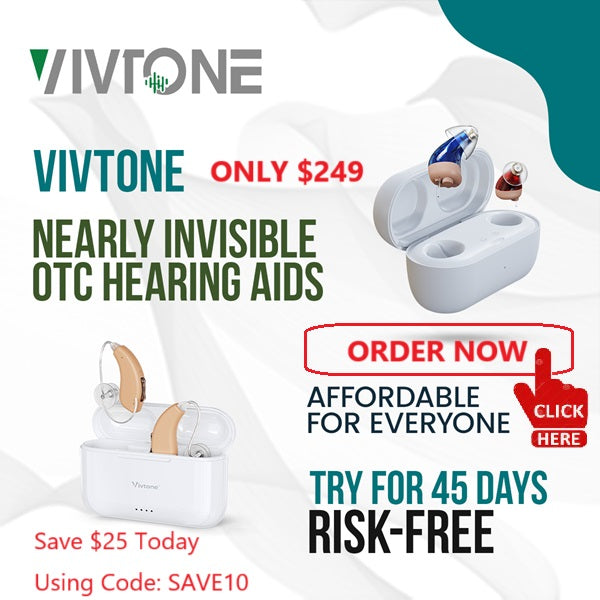Maximize Your Hearing: The Ultimate Guide to Hearing Aid Battery Mastery
Navigation
- The Two Main Types of Hearing Aid Batteries
- Disposable Zinc-Air Batteries
- Rechargeable Lithium-Ion Batteries
- How to Choose Between Battery Types
- How to Care For Your Hearing Aid Batteries
- How to Stock Up on Batteries and Recycle Properly
- Hearing Aid Battery Myths - Fact vs. Fiction
- The Bottom Line

Having a dead hearing aid battery at an inconvenient time can be incredibly frustrating. Just ask John, who was giving an important presentation at work when his hearing aids suddenly stopped working. He struggled to hear questions from the audience, ultimately having to cut the talk short. Situations like this demonstrate the importance of understanding your hearing aid batteries. By learning the different types available and how to care for them, you can avoid unwanted battery issues. This article provides a helpful overview of hearing aid battery basics.
The Two Main Types of Hearing Aid Batteries
Modern hearing aids primarily use two different battery types:
- Disposable zinc-air batteries – These have been the standard for many years and come in four sizes to fit different hearing aid models. They provide quick, convenient power.
- Rechargeable lithium-ion batteries – A newer option that is rechargeable and more eco-friendly. However, they rely on regular charging to avoid going dead.
Disposable Zinc-Air Batteries
Zinc-air disposable batteries have been the traditional go-to power source for most hearing aids. They are widely available and provide immediate power. Here are the key details on the four sizes:
- Size 10 (Yellow Tab) – The smallest zinc-air battery size at 5.8mm x 3.6mm. It is used primarily for very small canal hearing aids. Lasts approximately 3-7 days per battery.
- Size 312 (Brown Tab) – Measures 7.9mm x 3.6mm. Commonly used in behind-the-ear and in-the-ear hearing aid styles. Provides 3-10 days of power.
- Size 13 (Orange Tab) – Slightly larger at 7.9mm x 5.4mm. It is also used in many BTE and ITE models. Lasts 6-14 days on average.
- Size 675 (Blue Tab) – The largest zinc-air battery at 11.6mm x 5.4mm. Mainly for larger, more powerful hearing aids. Offers the longest power at up to 9-12 weeks per battery.
Zinc-air battery duration depends on hearing loss level, device settings, and hours of daily use. Be alert to signs of low batteries, like reduced amplification or distortion. Promptly replace with new batteries.
Here are the main pros and cons of disposable zinc-air batteries:Pros:
- Widely available at many retailers, making them easy to purchase
- Provide immediate power - no charging required
- Four sizes accommodate different hearing aid models and power needs
- Low upfront investment - just purchase batteries as needed
- Long shelf life if stored properly
- Convenient to swap out and replace dead batteries quickly
Cons:
- Require frequent replacement, purchasing new batteries regularly
- Not rechargeable, so depleted batteries must be thrown out
- Small tabbed batteries can be difficult to handle for those with dexterity issues
- Improper disposal contributes to environmental waste
- Not a cost-effective long-term option compared to rechargeables
- It is inconvenient if batteries die at inopportune times away from a supply source
Rechargeable Lithium-Ion Batteries
Rechargeable lithium-ion batteries are a newer option starting to gain popularity. They offer convenience and are more eco-friendly due to less waste. Here are the main pros and cons:
Pros:
- Just pop them in the charging case overnight as needed - no constant battery purchases
- The charger case keeps them protected and powered
- More eco-friendly since you're not tossing out used batteries
- Save money in the long run without disposable battery costs
Cons:
- It is easy to forget to charge overnight and end up with dead hearing aids
- Can't simply swap in new batteries if they go dead
- You have to buy the recharger system separately
- Not available for every hearing aid model
The key is forming an iron-clad habit of charging them in their case every single night, even if they're not drained. This keeps them powered up and ready for your ears each morning. When you're not using your devices, store them in the charger case that comes with them. Typically, lithium-ion batteries will need to be replaced after 3 to 5 years. With some discipline, rechargeable batteries can be a convenient and cost-effective option. Just know the drawbacks too.
How to Choose Between Battery Types

When selecting hearing aids, battery type is an important decision. Consider factors like:
- The severity of your hearing loss - For mild to moderate losses, rechargeable batteries may provide adequate power. But for more significant losses, disposable 675 or 13 batteries may be required.
- Dexterity and ability to swap small batteries frequently - If you struggle with manual dexterity, rechargeable batteries avoid frequent battery changes.
- Reliability in charging devices every night - To avoid disruptions, ensure you can commit to nightly charging of rechargeables.
- Eco-friendliness and desire to produce less non-rechargeable waste - Rechargeables are more environmentally friendly.
- Cost - Disposables are typically more affordable upfront. But rechargeables offer savings over the years by eliminating battery purchases.
- Hearing aid style and size - The four disposable battery sizes accommodate different device sizes and styles. Rechargeable batteries are limited to certain models.
Discuss your individual needs and preferences with your hearing provider to decide if disposable 312s, 10s, 13s, or 675s, or rechargeable lithium-ions better suit your hearing loss, lifestyle, and budget.
How to Care For Your Hearing Aid Batteries
To get the most out of your hearing aid batteries, proper care and maintenance are essential. Here are some key tips:
- When using disposable zinc-air batteries, remove the tab and wait 2-5 minutes before inserting to allow full activation.
- Store batteries correctly in a cool, dry place in their original packaging or hearing aid case. Avoid humidity, heat, and exposure to metal objects.
- Be alert for signs your battery is low, like reduced volume or distortion. Promptly insert fresh batteries.
- With rechargeable batteries, form a habit of nightly charging to keep them powered. Use the charger storage case when not wearing.
- Check for moisture buildup in battery compartments, which can shorten lifespan. Consider a hearing aid dryer.
- Turn hearing aids off when not in use to conserve battery life.
How to Stock Up on Batteries and Recycle Properly
Having spare batteries on hand lets you conveniently swap in fresh ones when your current ones die. Purchase extras from your hearing clinic, local pharmacies, or electronics retailers. Many clinics offer discounted battery club memberships. Always check expiration dates before buying.
Properly recycling used batteries is crucial, as they contain toxic chemicals like mercury and lead that can contaminate landfills. Do not simply throw them in the trash. Many hearing clinics have battery recycling programs. You can also check for recycling options through your local waste management authority or hardware stores. Recycling protects our health and environment.
Hearing Aid Battery Myths - Fact vs. Fiction

Let's debunk some common battery myths to optimize your hearing aid performance:
- Myth: Freezing or refrigerating zinc-air batteries extends their lifespan.
Fact: Temperature extremes actually reduce initial battery power. Store at room temperature.
- Myth: Rechargeable lithium-ion batteries suffer from "overcharging" issues.
Fact: Leaving these batteries in the charger after a full charge won't damage them or shorten their lifespan.
Knowing the facts on proper care and usage will ensure you get the most out of your hearing aid batteries. Don't let myths interfere with optimal power and performance.
The Bottom Line
Understanding the available hearing aid battery options and how to care for them is key to keeping your devices functioning properly. By learning the differences between disposable and rechargeable batteries, buying fresh ones routinely, storing them correctly, and recycling used batteries, you can avoid inconvenient hearing aid failures. Consult your hearing care professional and follow their guidance for the battery choices best suited for your needs and lifestyle. With the right knowledge, you can keep the batteries powering your hearing aids going strong.





